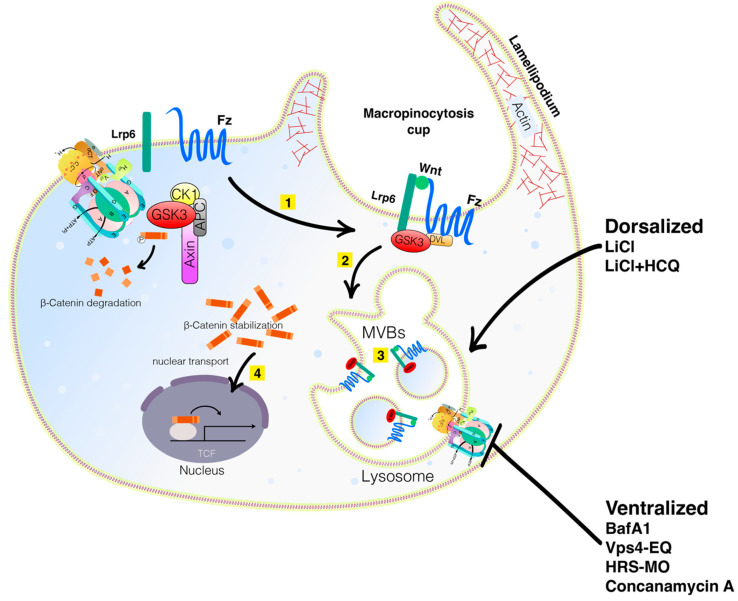Figure 2.
Wnt signaling involves macropinocytosis, V-ATPase, MVBs, membrane trafficking, and lysosomes. Sequestration of GSK3 is a vital step in the activation of the canonical Wnt pathway. When the Wnt ligands bind to the Fz receptor and the Lrp6 co-receptors (Step 1 in yellow), GSK3 is translocated into the membrane. It is then internalized into an early endosome and subsequently into MVBs (Step 2). The sequestration of GSK3 and the destruction complex activate the Wnt pathway (Step 3). Lysosomal activity is critical for dorsal development. Mimicking Wnt signaling with LiCl can dorsalize embryos, an effect that is even more pronounced with LiCl plus HCQ. Inhibiting lysosomal activity with BafA1 or Concanamycin A or interfering with the MVB formation with VPS4-EQ or HRS-MO ventralizes embryos. Wnt and cell adhesion are often active in the same processes and crosstalk between them exists by reciprocal regulation and sharing of components. Knowing how Wnt signaling and cell adhesion cooperate will improve our understanding of embryonic development decisions and carcinomas. Diagram based on findings reported in Tejeda—Muñoz et al., 2022, with permission from Proceeding of the National Academy of Science and Creative Commons.

